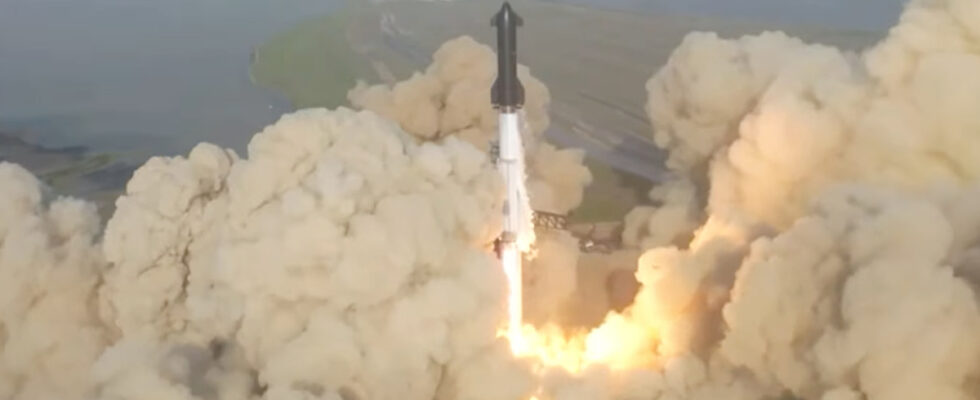Day of celebration at SpaceX. For the first time, Starship, the largest rocket in history, soared into the skies. She took off this Thursday, April 20 shortly after 3:30 p.m. French time, from the Boca Chica base, in Texas (United States). Although it managed to successfully leave the launch pad without incident, it nevertheless exploded three minutes after takeoff at an altitude of 30,000 metres.
Nevertheless, it remains a major success for the space company of Elon Musk, who prayed that the rocket would manage to get far enough from the launch pad not to destroy it. In such a case, rebuilding it would have taken “months”, according to the American multi-billionaire. Consequently, cheers were heard from SpaceX’s command center as the 120-meter-tall Starship rocket lifted off the ground. As a reminder, a first attempt had been canceled a few minutes before the end of the countdown on Monday April 17 due to a technical problem.
Objective Moon in 2025
Now that SpaceX has managed to get Starship off the ground, the objective will be to succeed in the other stages of the mission, namely the detachment of the first stage (Super Heavy), which carries the 33 engines of the launcher, three minutes after takeoff to fall back in the Atlantic. It is at this moment that the six engines of the second stage, baptized Starship and equipped with fins, must ignite to allow it to continue its ascent, up to more than 150 km in altitude, and thus to begin a near-circle of the Earth for more than an hour, before falling back into the Pacific, off Hawaii.
Achieving all of these steps on the first flight would have been a miracle. SpaceX teams will now analyze the data collected during this test flight to correct the situation. The stakes are high as NASA has chosen this rocket to take astronauts to the Moon again as part of the Artemis III mission. A return to the Earth’s natural satellite which is hoped for by 2025.
